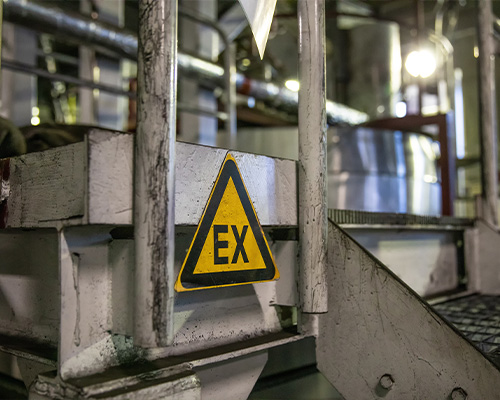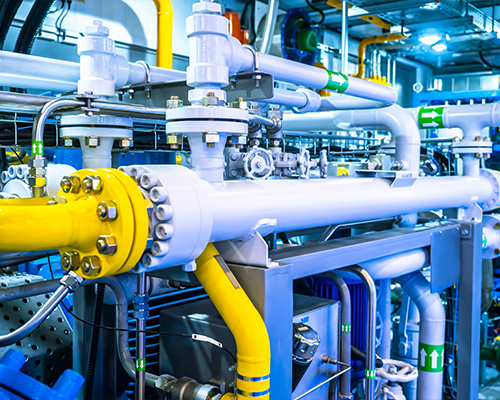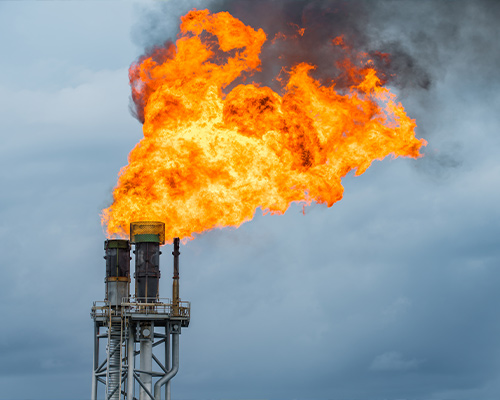AREA CLASSIFICATION AND RISK ASSESSMENT
AREA CLASSIFICATION AND RISK ASSESSMENT
Area Classification and Risk Asssessment
Area Classification and Risk Assessment are both areas in which Exeltech Ltd is highly experienced, with over 20 years helping clients gain DSEAR / ATEX compliance.
Regulation 5 of DSEAR requires that where a dangerous substance is or is liable to be present at the workplace, the employer shall make a suitable and sufficient assessment of the risks to his employees that arise from that substance.
Our Engineers complete a site audit and conduct risk assessment meetings with client personnel responsible for operations and health and safety within the relevant site areas. The purpose is to reduce the extent of the classified areas and eliminate them if possible. We advise on ventilation, housekeeping and handling.


Part of Regulation 7 of DSEAR requires that the employer classifies places at the workplace where an explosive atmosphere may occur into hazardous or non-hazardous locations, i.e. a hazardous area study must be carried out and documented.
An accurate area classification study must be completed. For instance, it is undeniably dangerous if an area is classified safe when it is hazardous. Much less appreciated are the consequences of getting it wrong the other way. An over-classified area drain company profits for as long as it remains so; initially in the form of an overly expensive installation, after that in costly maintenance and inspection.
We classify areas in line with the BS EN 60079-10 standard,
also with the model code of practice if there is a connection
with a particular industry, e.g. Energy Institute EI15,
Institute of Gas Engineers IGEM SR25.
Exeltech Ltd can validate calculations using the HSE’s Quadvent 2.
Part of Regulation 7 of DSEAR requires that the employer classifies places at the workplace where an explosive atmosphere may occur into hazardous or non-hazardous locations, i.e. a hazardous area study must be carried out and documented.
An accurate area classification study must be completed. For instance, it is undeniably dangerous if an area is classified safe when it is hazardous. Much less appreciated are the consequences of getting it wrong the other way. An over-classified area drain company profits for as long as it remains so; initially in the form of an overly expensive installation, after that in costly maintenance and inspection.
We classify areas in line with the BS EN 60079-10 standard, also with the model code of practice if there is a connection with a particular industry, e.g. Energy Institute EI15, Institute of Gas Engineers IGEM SR25.
Exeltech Ltd can validate calculations using the HSE’s Quadvent 2.

What is Quadvent 2?
Historically, the gas cloud volume Vz required for area classification had to be estimated using a methodology defined in BS EN 60079:10-1 (2009). This methodology has no basis in science and has frequently shown to produce unnecessarily conservative results.
In 2011, HSL developed a scientifically-based mathematical model of a flammable gas jet to provide more realistic estimates of Vz for releases of flammable gases in ventilated enclosures or outdoors.
This model formed the basis of Quadvent, a quick and easy-to-use software tool which calculates Vz for any situation in which the flammable gas cloud volume or extent of the flammable cloud needs to be determined for a release of pressurised gas.

The benefits of using Quadvent 2
As an alternative to estimating the flammable gas cloud volume by using the method described in BS EN 60079:10-1 (2009), Quadvent 2 provides the following benefits:
- The software is quick and easy-to-use reducing cost of complex calculations
- Realistic Vz estimates save the capital and maintenance costs of unnecessarily protecting electrical and non-electrical equipment for use in hazardous areas
- It uniquely calculates Vz both for ventilated enclosed areas and for outdoors
- The software has been rigorously tested and validated against detailed gas release data to ensure its reliability as a tool for hazardous area classification
- Quadvent 2 can realistically estimate the natural ventilation rate of a building
- Mathematical models have been added to cover a variety of gas and liquid release scenarios including gas jets, flashing releases and plume releases
A formal report is provided for your records along with the area classification drawings and supporting calculations that go with it.
The HSE has trained Exeltech Ltd Engineers for Hazardous Area Engineering in the following areas:
- The classification of hazardous substances
- The relevance of the physical/chemical properties of gases, liquids and mists to area classification
- The classification of hazardous areas by zone, including the concept of a zone of negligible extent (NE)
- The importance of ventilation in area classification and the concept of Vz
- The Quadvent approach to area classification
- The national and international standards and guidance commonly used in area classification including practical examples of their use
The benefits of using Quadvent 2
As an alternative to estimating the flammable gas cloud volume by using the method described in BS EN 60079:10-1 (2009), Quadvent 2 provides the following benefits:
- The software is quick and easy-to-use reducing cost of complex calculations
- Realistic Vz estimates save the capital and maintenance costs of unnecessarily protecting electrical and non-electrical equipment for use in hazardous areas
- It uniquely calculates Vz both for ventilated enclosed areas and for outdoors
- The software has been rigorously tested and validated against detailed gas release data to ensure its reliability as a tool for hazardous area classification
- Quadvent 2 can realistically estimate the natural ventilation rate of a building
- Mathematical models have been added to cover a variety of gas and liquid release scenarios including gas jets, flashing releases and plume releases
A formal report is provided for your records along with the area classification drawings and supporting calculations that go with it.
The HSE has trained Exeltech Ltd Engineers for Hazardous Area Engineering in the following areas:
- The classification of hazardous substances
- The relevance of the physical/chemical properties of gases, liquids and mists to area classification
- The classification of hazardous areas by zone, including the concept of a zone of negligible extent (NE)
- The importance of ventilation in area classification and the concept of Vz
- The Quadvent approach to area classification
- The national and international standards and guidance commonly used in area classification including practical examples of their use
